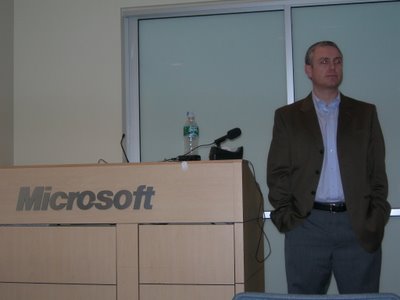Pure play open source Microsoft ISV details transformation from proprietary world


Aras Corp, of Andover, Mass, decided last January to begin offering its commercially established multi-platform product lifecycle management (PLM) and business process management (BPM) software using an open source model, on the Microsoft stack only. No Linux or Unix.
“Many companies have gone from [offering their software] on Linux and Unix to Windows but there was no pure play Microsoft open source company, and we looked,” said Marc Lind, vice president of marketing for Aras, who spoke at the Microsoft office in Waltham, Mass. Thursday night.
One caveat: Aras adopted the Microsoft Community License,not the GPL.
But why would any commercially successful ISV take this path, especially one that competes against big companies such as Oracle and SAP?
Faster innovation, for one. Aras, for instance, recently became one of only 10 ISVs to gain full certification for its software running on Microsoft's forthcoming Windows Server 2008 and SQL Server 2008, a feat which would not have been possible without the open source development model, Lind claims. Those Microsoft products will ship in February.
In 2005, Aras saw two seemingly disparate market trends emerging and the possibility of carving out a differentiated business model from its competitors.
“At one point, we were supporting J2EE on Websphere and we were multi-platform. But we were seeing clear indicators that customers were beginning to make a pervasive corporate commitment to Microsoft in the backoffice for server apps,” he said.
At the same time, Aras was seeing increased customer interest – especially its military customers -- in open source because of its licensing and deployment flexibility and better control over IT costs. “In open source, we saw undeniable momentum and increasing corporate appeal for open source as a format, he said.
Aras started tinkering with the idea in 2005 and spent more than a year formulating a strategy. The company adopted a Red Hat-like open source business model, in which the software is free but the customers pay a maintenance fee for updates, fixes, security patches and other value added software. Its software requires use of .NET Framework, Windows Server and SQL Server.
Aras’ strategy has been met with mixed reviews within Microsoft. On the plus side, and unlike other open source enterprise apps vendors like MySQL and SugarCRM that compete against Microsoft's SQL Server and Microsoft CRM, Aras does not compete directly against Microsoft in the server apps market.
Still, Aras exec were worried how its paying customers – and Microsoft – would respond. “We thought about it. What would Microsoft do? Will it be ok? Will it be null and void and would we have to re-implement the entire stack on LAMP? These were real questions we were wrangling with.”
Fortunately,Aras came up with a solution for its existing customers who paid big bucks for the software: free maintenance for a specified period. And fortunately for them, the open source group within Microsoft, led by Bill Hilf, offered executive sponsorship, paving a way for them to prosper.
It didn’t hurt that Aras chose to use the Microsoft Community License, which imposes no contribution requirements on users.
He said the results have been excellent to date. He would not comment on profitability but said the projected revenues stream is panning out. Immediately after announcing the switch and re-launching the company lin January of 2007, Aras picked up several enterprise customers that had been in the pipeline but averse to capital costs and it also began picking up more steam in the midmarket.
“The subscription model has a beautiful cumulative effect; it is very predictable. Its very profitable and highly scalable. It just keeps growing and has very nice deferred revenues stream. You know you have numbers in bank before you start the quarter. The investors like this model. "
He's certain that most software vendors will eventually adopt an open source model but is not worried about the large public companies following suit since they live quarter to quarter and Wall Street would not be able to stomach a sudden switch, and is certain his other competition won't be able make the transition smoothly because their companies are still too big. "It's a painful transition," he said about the groundwork and time investment necessary to switch.
The event was sponsored by the New England Chapter of the Product Development and Management Association (PDMA).